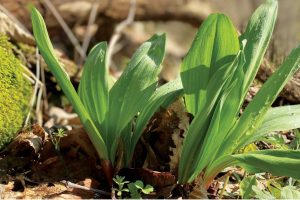 Written by Chef Ambassador, Matt Welsch
Written by Chef Ambassador, Matt Welsch
Springtime in the West Virginia mountains is something to behold. As we say in these parts, “if you don’t like the weather, just wait a few minutes!” It is common to see all four seasons in the span of one day or even across a few hours. We learn to layer up in these parts, and to be ready for anything. After all, self-sufficiency is the Appalachian way.
No amount of weather roulette will calm a West Virginian’s enthusiasm for the spring and we know the season brings many boons to offset the trailings of winter – longer days, more sun, the landscape bursting from greys to brilliant greens – and most of all – ramps!
“Now, what in the name of all things wild and free are ramps!?”
Well, my friends, let me tell you. Ramps are a treasure to us here in the mountains. They are a type of wild onion with a bulb very reminiscent of a single small garlic bulb. These bulbs, though, have a root cluster on the bottom side and are attached by this beautiful reddish stem to a large broad leaf on the top.
In the old days, these pungent little babies might be the first fresh vegetable folks had seen in quite a long time. So, you can imagine how welcome a sight they would be and why they would often lead to community-wide events or “ramp feeds.”
Now, while the entire plant is edible, it’s important to treat different parts of the plant differently. Once you take the roots off with a sharp blade, ramps can be eaten fresh from the ground, but they can do so much more than that. I would have to say that ramp-fried potatoes are the most traditional dish, eaten with cornbread and soup beans, at least in my family. Or, you could straight up put the ramps in your cornbread.


